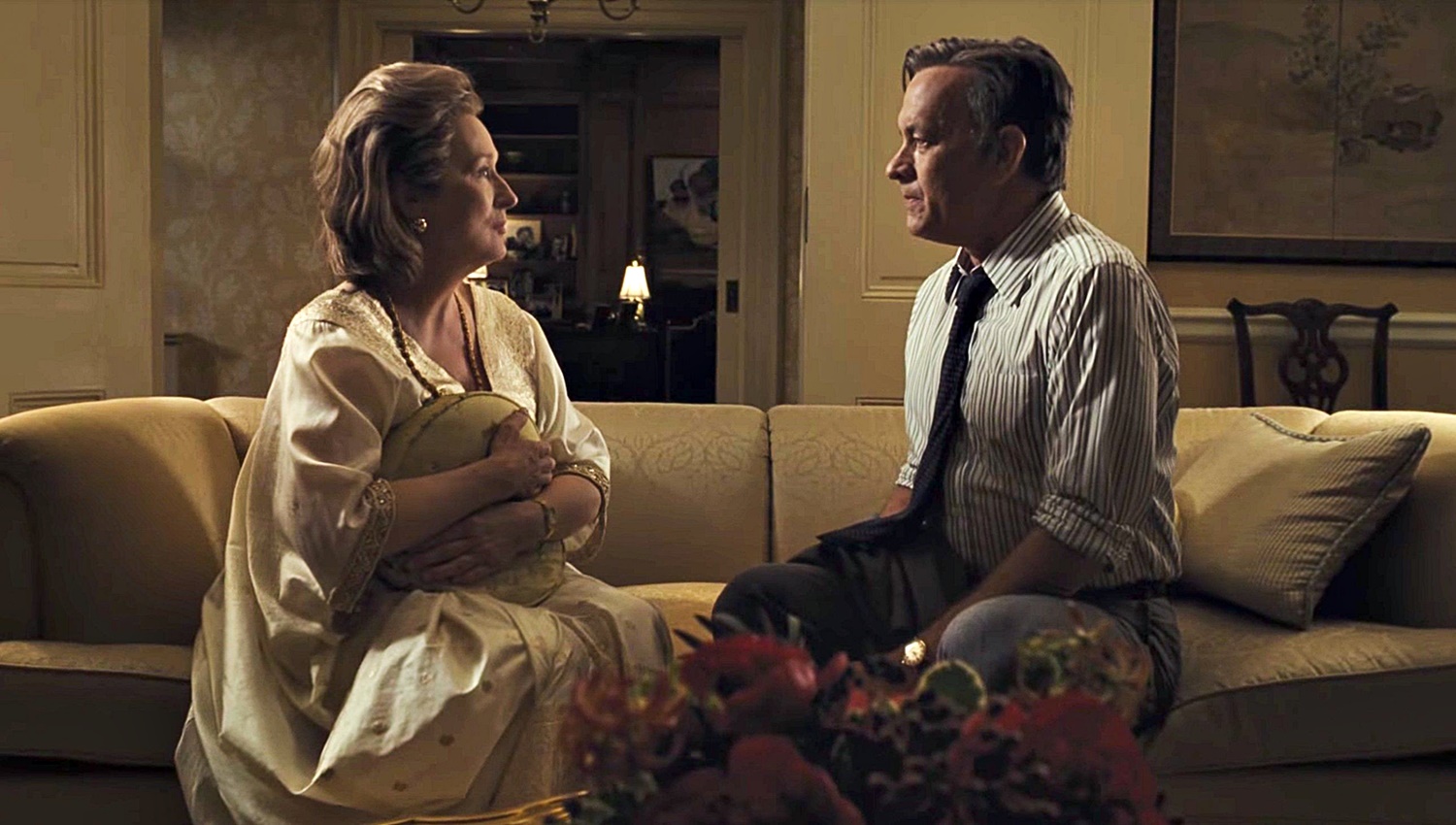
The Post
Dustin Chase
Steven Spielberg, compelled by the parallels between 1971’s Pentagon Papers leak to The New York Times/Washington Post, and our current administration, he rushed new film The Post ahead of his expensive new sci-fi fantasy Ready Player One (2018). The Saving Private Ryan director brings film icons Meryl Streep and Tom Hanks together on the screen for the first time. Liz Hannah’s dialogue excessive script, about the former days of important journalism, is transformed into a compelling legal battle between the freedom of the press and government secrecy. The audience is immersed in information that’s fundamental to understanding the stakes and the characters actions. Meaning, if you are not following and paying attention from the get-go, this fast-paced drama will leave you in the dust.
It turns out, the most important weapon Daniel Ellsberg (Rhys) took with him into the Vietnam war, was a typewriter. “Is anyone else tired of reading the news, instead of reporting it,” Ben Bradlee (Hanks) asks, as Washington Post again scooped by New York Times. Ellsberg has blown the lid wide open on the American governments dirty secrets regarding Vietnam and as a result The White House silenced the Times. The Post just went public at the hands of owner Kay Graham (Streep), to secure the papers financial future. Now editor Bradley and Graham must contemplate the paper and employee’s future as The Post acquires the pentagon papers and becomes The White House’s number one enemy.
Spielberg does manage to make an indoor, room to room, conversational film interesting.
Spielberg isn’t known for his strong female roles and while three- time Oscar winner Streep brings many facets to life as the glass ceiling shattering Graham, it doesn’t resonate as one of her strongest performances. For the majority of the film, Graham is always at some social party, dinner function, only near the end, during her game changing decision to publish, does her character feel more instrumental to the overall goal. Bradlee jokingly threatens Graham when she offers unwanted editorial advice, which sets a standard for his character. Spielberg crafts a handful of scenes that visually represent Graham’s inclusion into a boy’s club: twice she enters a room full of identical men wearing nearly the same suit, contrasting her as a beacon of change. You can almost imagine Streep’s One True Thing character becoming Kay Graham if afforded the opportunity. Compared to this year’s abundance of female acting contenders, Streep doesn’t match the likes of showier performances from Robbie, McDormand, Hawkins, Ronan, Stone or Benning.
The Post preaches to the choir a bit, those already familiar with the landmark supreme court decision will be the ticket buyers, while those in need of this film’s message and legacy will be the ones who skip. Spielberg does manage to make an indoor, room to room, conversational film interesting. There is a six-way phone conversation that becomes the movies centerpiece climax, as every leading and supporting character must weigh in on the path forward. Bridge of Spies cinematographer Janusz Kaminski delivers some captivating vertical camera maneuvers to spice up an otherwise cinematically stale drama. The Post explores behind the doors journalism as much it does the historical stand off between press and government. Already this film is being compared to recent Oscar best picture winner Spotlight, both from newspaper medias point of view. The biggest difference between the two, outside of subject matter, is emotion. The Post is more about purpose than it is people.
Final Thought
It’s not groundbreaking cinema or emotionally engaging but Spielberg brings important history to life with the help of Streep and Hanks.
